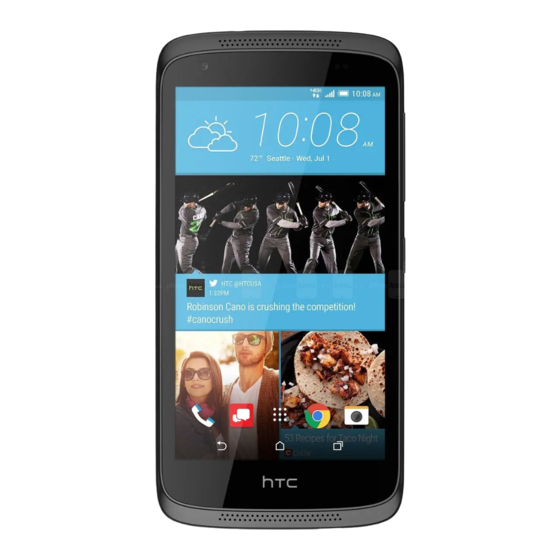HTC DESIRE 526 Manuale di servizio - Pagina 21
Sfoglia online o scarica il pdf Manuale di servizio per Telefono cellulare HTC DESIRE 526. HTC DESIRE 526 48.
Anche per HTC DESIRE 526: Conoscere (2 pagine)

Do Wireless Phones Pose Any Special Risks to
Children?
The FDA website states that "[t]he scientific evidence does not
show a danger to any users of cell phones from RF exposure,
including children and teenagers." The FDA website further
states that "[s]ome groups sponsored by other national
governments have advised that children be discouraged from
using cell phones at all. For example, the Stewart Report from
the United Kingdom ["UK"] made such a recommendation in
December 2000. In this report a group of independent experts
noted that no evidence exists that using a cell phone causes
brain tumors or other ill effects. [The UK's] recommendation
to limit cell phone use by children was strictly precautionary;
it was not based on scientific evidence that any health hazard
exists." A copy of the UK's leaflet is available at http://www.
dh.gov.uk (search "mobile"), or you can write to: NRPB, Chilton,
Didcot, Oxon OX11 0RQ, United Kingdom. Copies of UK's annual
reports on mobile phones and RF are available online at http://
www.iegmp.org.uk and http://www.hpa.org.uk/radiation/
(search "mobile"). Parents who wish to reduce their children's RF
exposure may choose to restrict their children's wireless device
use.
Where Can I Obtain Further Information About RF
Emissions?
For further information, see the following additional resources
(websites current as of August 2012).
U.S. Food and Drug Administration
FDA Consumer Magazine, November–December 2000
Telephone: 1-888-INFO-FDA
http://www.fda.gov (Under "c" in the subject index,
select Cell Phones > Research.)
39
American National Standards Institute
1819 L Street NW, Suite 600
Washington, D.C. 20036
Telephone: 1-202-293-8020
http://www.ansi.org
Implantable Medical Devices
A minimum separation of six (6) inches should be maintained
between a wireless phone and an implantable medical device,
such as a pacemaker or implantable cardioverter defibrillator,
to avoid potential interference with the device.
Persons who have such devices:
• Should ALWAYS keep the wireless phone more than six
(6) inches from their implantable medical device when the
wireless phone is turned ON;
• Should not carry the wireless phone in a breast pocket;
• Should use the ear opposite the implantable medical device
to minimize the potential for interference;
• Should turn the wireless phone OFF immediately if there is
any reason to suspect that interference is taking place;
• Should read and follow the directions from the
manufacturer of your implantable medical device.
For additional information, see www.fda.gov (under "c" in
the subject index, select Cell Phones > Interference with
Pacemakers and Other Medical Devices).
Drive Responsibly
When behind the wheel, safe driving is your responsibility and
it should always be your first priority. Scientific research on the
subject of wireless phone use and driving has been conducted
worldwide for several years. According to the National Highway
Traffic Safety Administration (NHTSA), the available research
40
